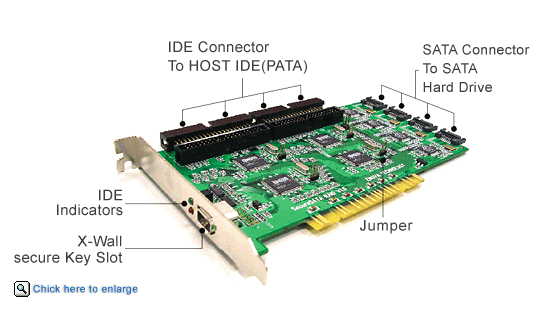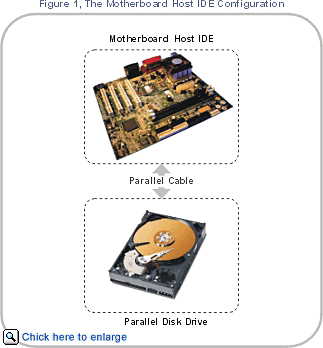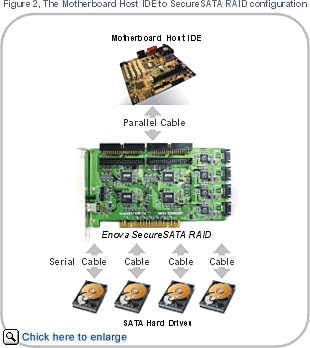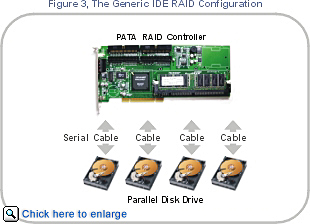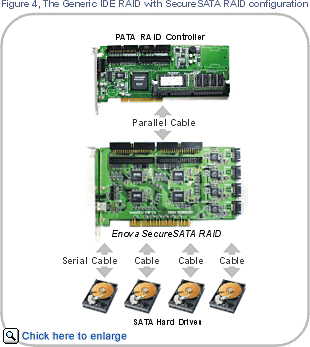|
|||||||||||||||||
PR Contact:
Company Contact: |
Applications

Enova® SecureSATA RAID is a Parallel ATA to Serial ATA cryptographic bridge circuit board capable of encrypting all connected SATA hard drives at 133MB/sec real-time performance. The SATA hard drives connected after the Enova® SecureSATA RAID are secured by Enova®'s X-Wall® XO-128 and/or X-Wall XO-192 single chip cryptographic gateway to ensure the privacy and confidentiality of the data.
The configurations of the Enova® SecureSATA RAID can be versatile. You may choose to connect the Enova® SecureSATA RAID right after the Host IDE of the motherboard (yes, the Parallel ATA Host) to control up to four (4) SATA hard drives without limitation on per drive volume. All connected SATA hard drives are strongly encrypted with the X-Wall XO-128 and/or XO-192. There is absolutely no performance degradation. Please note, however, the Enova® SecureSATA RAID does not offer any actual RAID functionalities. It simply bridges through all RAID functionalities from the Host to the Device, thereby achieving the RAID functionalities with strong security. See below Figure 1, The Motherboard Host IDE Configuration, for standard configuration without encryption. Figure 2, The Motherboard Host IDE to Enova® SecureSATA RAID configuration, illustrates how the Enova® SecureSATA RAID is connected.
Or, you may select to connect the Enova® SecureSATA RAID right after a physical IDE RAID controller (such as Promise SX4000, SX6000 and/or 3-Ware 7506-4LP) through simple cable connection. Then you may connect up to four (4) SATA hard drives on the Enova® SecureSATA RAID to enjoy the performance and security it brings to you. Again, the Enova® SecureSATA RAID simply bridges through all RAID functionalities from the physical IDE RAID controller to the SATA hard drives, thereby achieving RAID functionalities with strong security. See below Figure 3, The Generic IDE RAID Configuration, for standard configuration without encryption. Figure 4, The Generic IDE RAID with Enova® SecureSATA RAID configuration, illustrates how the Enova® SecureSATA RAID is connected to encrypt SATA hard drives.
The Enova® SecureSATA RAID contains four (4) Enova® Technology X-Wall XO-128 and or X-Wall XO-192 cryptographic bridge chips that are capable of delivering 133MB/sec bursting to all connected SATA hard drives. Operation of encryption and decryption is totally transparent to users. Look below Gartner's note on hardware security: “Hardware is also not invulnerable to attack, but it generally requires much more sophisticated attackers with larger budgets than those that typically succeed against software-only security options. When information is sensitive, valuable or ‘must be trusted not to change’, hardware has to be part of the solution.” * Gartner Research Note COM-16-5309, 10 June 2002: “Software Security is Soft Security: Hardware is required”
There isn't any performance degradation because of operations of encryption and decryption. All contents including Operating System, boot sector, and temp./swap files are strongly encrypted using NIST & CSE certified TDES 128-bit or 192-bit hardware algorithms. The Enova® SecureSATA RAID does not require any special device drivers nor does it depend on Operating System. The PCI bus only offers the required connections for power, ground and support.
|

